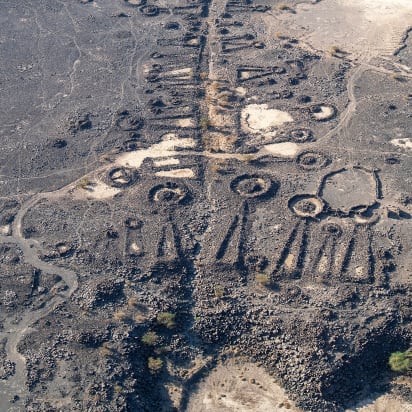
Archaeologists discovered a 4,500-year-old highway network lined with well-preserved ancient tombs in Saudi Arabia.
Over the last year, researchers from the University of Western Australia have conducted a wide-ranging investigation. It included helicopter aerial surveys, ground surveys and excavation, and satellite imagery analysis.
They stated the “funerary avenues” spanning significant distances in the northern Arabian counties of Al-‘Ula and Khaybar had got little scrutiny until recently, according to results published in the Holocene magazine in December.
“The people who live in these areas have known about them for thousands of years,” researcher Matthew Dalton told CNN. “But I think it wasn’t really known until until we got satellite imagery that just how widespread they are.”
Dalton claimed that the funerary avenues, he saw from a helicopter, went for hundreds, “maybe even thousands of kilometers”. Also, individuals followed the same routes frequently going along today’s main roads.
“Often you’ll find main roads tend to follow the same routes as the avenues because they tend to be the shortest route between the two places they’re going to,” Dalton said. “And actually, in some cases, the tombs themselves are so dense that you can’t help but walk on the ancient route itself because you’re sort of hemmed in by the tombs.”
Pendant shape or ring shape burials
The ancient tombs are primarily in pendant shape or ring shape burials. Pendant tombs feature “beautiful tails,” whereas ring tombs have a cairn encircled by a two-meter-high wall.
The researchers employed radiocarbon dating to discover a concentrated set of samples dated between 2600 and 2000 BC, despite the tombs being reused until about 1,000 years ago.
“These tombs are 4,500 years old, and they’re still standing to their original height, which is really unheard of,” researcher Melissa Kennedy told CNN. “So I think that’s what particularly marks Saudi Arabia out from the rest of the region — just the level of preservation is unbelievable.”
The team has discovered roughly 18,000 tombs along the funerary avenues. 80 of them have sampled or excavated for research. Kennedy believes that single individuals or small groups were buried in the tombs.
“A way of showing ownership perhaps”
The researchers believe that the paths were in use long before the tombs came. They are still unsure why the ancient tombs are in place along the route in Saudi Arabia. However, Kennedy alluded to similar customs associated with land ownership in Greece and Rome later in history.
“A way of showing ownership perhaps could be one reason the tombs were built,” Dalton said. “And there may be an element of, you bury your nearest and dearest alongside the route, because you’ll be passing them frequently, and you have a place to remember them.”
The team’s next step will be to do more radiocarbon dating and return to the field before reviewing their findings. More finds are likely. Dalton is speculating that the pathways may continue into Yemen. The discovery of similar tombs is in both that country and northern Syria.
“The third millennium is such an important period of time,” Kennedy said. “It’s when the Pyramids are built. And it’s where lots of different cultures are interacting with each other for the first time on a wide scale. So to see the appearance of this monumental funerary landscape in this period is really exciting. And huge new avenues of research to basically follow.”
